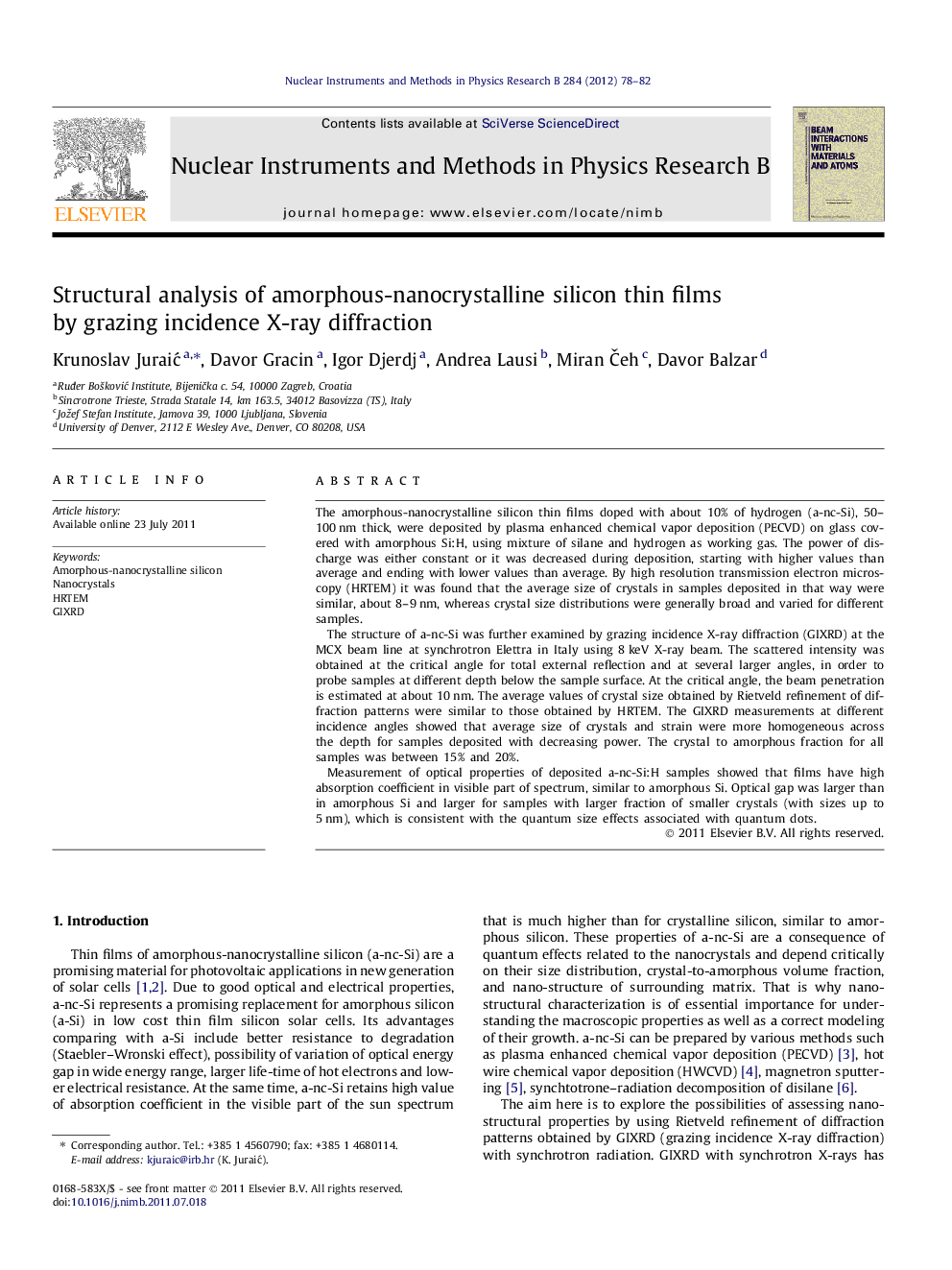| Article ID | Journal | Published Year | Pages | File Type |
|---|---|---|---|---|
| 1685237 | Nuclear Instruments and Methods in Physics Research Section B: Beam Interactions with Materials and Atoms | 2012 | 5 Pages |
The amorphous-nanocrystalline silicon thin films doped with about 10% of hydrogen (a-nc-Si), 50–100 nm thick, were deposited by plasma enhanced chemical vapor deposition (PECVD) on glass covered with amorphous Si:H, using mixture of silane and hydrogen as working gas. The power of discharge was either constant or it was decreased during deposition, starting with higher values than average and ending with lower values than average. By high resolution transmission electron microscopy (HRTEM) it was found that the average size of crystals in samples deposited in that way were similar, about 8–9 nm, whereas crystal size distributions were generally broad and varied for different samples.The structure of a-nc-Si was further examined by grazing incidence X-ray diffraction (GIXRD) at the MCX beam line at synchrotron Elettra in Italy using 8 keV X-ray beam. The scattered intensity was obtained at the critical angle for total external reflection and at several larger angles, in order to probe samples at different depth below the sample surface. At the critical angle, the beam penetration is estimated at about 10 nm. The average values of crystal size obtained by Rietveld refinement of diffraction patterns were similar to those obtained by HRTEM. The GIXRD measurements at different incidence angles showed that average size of crystals and strain were more homogeneous across the depth for samples deposited with decreasing power. The crystal to amorphous fraction for all samples was between 15% and 20%.Measurement of optical properties of deposited a-nc-Si:H samples showed that films have high absorption coefficient in visible part of spectrum, similar to amorphous Si. Optical gap was larger than in amorphous Si and larger for samples with larger fraction of smaller crystals (with sizes up to 5 nm), which is consistent with the quantum size effects associated with quantum dots.
